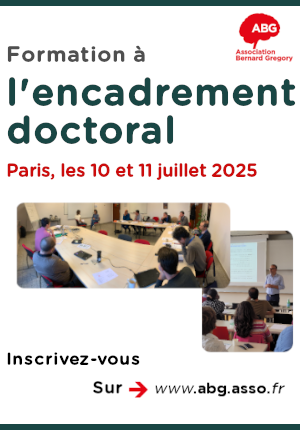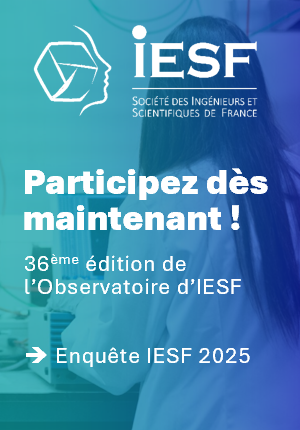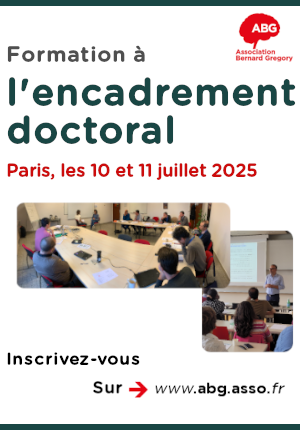LE ROLE DES FLUIDES PROFONDS DANS LA DYNAMIQUE DU MANTEAU // THE ROLE OF DEEP FLUIDS IN MANTLE DYNAMICS
|
ABG-130498
ADUM-62677 |
Thesis topic | |
| 2025-04-04 |
Université de Montpellier
Montpellier cédex 5 - France
LE ROLE DES FLUIDES PROFONDS DANS LA DYNAMIQUE DU MANTEAU // THE ROLE OF DEEP FLUIDS IN MANTLE DYNAMICS
- Earth, universe, space sciences
cycle du carbone, genèse des magmas alcalins, interaction fluide-roche, éléments volatils, rhéologie, géodynamique interne et externe
deep carbone, alkaline magma genesis, fuid-rock interaction, volatiles, rheology, geodynamic
deep carbone, alkaline magma genesis, fuid-rock interaction, volatiles, rheology, geodynamic
Topic description
Les interactions fluide-roche et magma-roche dans le manteau supérieur sont des processus clés pour comprendre la dynamique du manteau convectif et les interactions asthénosphère-lithosphère-atmosphère en domaine intracontinental. Les carbonatites et laves alcalines riches en carbone ainsi que les xénolites carbonatés/métasomatisés sont les marqueurs du rôle important des fluides dans le manteau. Ces fluides peuvent être issus de panaches asthénosphériques, de la lithosphère sous-continentale métasomatisée, ou de matériel subduit.
Cette étude aura pour objectif de caractériser les fluides profonds, leur origine et leur rôle dans le manteau en se basant sur un échantillonnage de laves alcalines, de gaz et de xénolites mantelliques le long du transect Canaries-Maghreb et sous le rift Est-Africain (Tanzanie). Ces régions se caractérisent par la présence de nombreux pointements de laves sous-saturées riches en éléments volatils, carbonatites et xénolites mantelliques contenant des minéraux riches en éléments volatils témoins de la présence des fluides dans le manteau sous la région Nord Afrique et Est Afrique. L'approche consistera en une étude de terrain pour compléter l'échantillonnage déjà réalisé, une étude pétrologique et géochimique multi-méthode (éléments majeurs, traces et volatils et isotopes radiogéniques et stables (roche totale, minéraux, inclusions vitreuses et des inclusions fluides)) des laves et des xénolites, et une étude pétrophysique des xénolites échantillonnés par les laves. L'étude pétrologique au sens large sera effectuée en parallèle à une étude expérimentale en laboratoire (pétrophysique et équilibre de phase) avec pour objectif : (1) de déterminer l'origine (profondeur, source) et l'évolution des laves mafiques carbonatées, (2) de contraindre les conditions de stockage des fluides en profondeur, notamment du carbone (T, P, fugacités en éléments volatils), (3) de définir le budget des éléments volatils (COHS-Cl-F), leur distribution et leur rôle lors de la genèse des magmas et leur interaction avec le manteau lithosphérique, et (4) de définir les propriétés physiques et la rhéologie des roches mantelliques métasomatisées sous le craton NW Africain et sous le craton Tanzanien lors de l'initiation du rift Est Africain.
D'un point de vue géodynamique, cette étude permettra de discuter en détail les différents modèles proposés pour la dynamique du manteau, en particulier les modèles « asthénosphériques » où les circulations mantelliques jouent un rôle prépondérant, en relation avec la montée de panaches mantelliques (Tanzanie, Canaries, Hoggar); les modèles « lithosphériques » qui attribuent les manifestations du manteau asthénosphérique (bombements lithosphériques, volcanisme...) à des effets en champ lointain de collision; ou encore le modèle de remobilisation de matériel subduit et accumulé dans le manteau supérieur; et d'évaluer et quantifier les flux de carbone entre le manteau supérieur et l'atmosphère liés au dégazage passif du manteau et au dégazage actif lors des éruptions volcaniques.
------------------------------------------------------------------------------------------------------------------------------------------------------------------------
------------------------------------------------------------------------------------------------------------------------------------------------------------------------
Fluid-rock and magma-rock interactions in the upper mantle are key processes for understanding the dynamics of the convective mantle and asthenosphere-lithosphere-atmosphere interactions in intracontinental setting. Carbonatites and volatile-rich alkaline lavas as well as carbonated/metasomatized xenoliths are markers of the important role of fluids in the mantle. These fluids can originate from asthenospheric plumes, metasomatized subcontinent lithosphere, or subducted material.
This study aims to constrain the origin of these fluids and their role in the mantle, based on sampling along the Canary-Maghreb transect and in the East African rift (Tanzania). These regions are characterized by numerous volcanoes with silica-undersaturated lava rich in volatile elements, carbonatites and mantle xenoliths containing volatile-rich minerals indicating the presence of fluids in the mantle beneath the North Africa and Tanzanian cratons. The approach will consist of a field study to complete the samples already carried out, a multi-method petrological and geochemical study (major elements, traces and volatiles and radiogenic and stable isotopes (total rock, minerals, melt inclusions and fluid inclusions)) of lavas and xenoliths, and a petrophysical study of mantle xenoliths sampled by lavas. The petrological study will be carried out in parallel to an experimental study (petrophysics and phase equilibrium) with the aim of: (1) determining the origin and evolution of carbonate mafic lavas, (2) constraining the storage conditions of fluids at depth, in particular carbon (T, P, fugacities in volatile elements), (3) defining the budget of volatile elements (COHS-Cl-F), their distribution and their role during magma genesis and their interaction with the lithospheric mantle, and (4) defining the physical properties and rheology of metasomatized mantle rocks beneath the NW African craton and the Tanzanian craton during the initiation of the East African Rift.
From a geodynamic point of view, this study will allow a detailed discussion of the different models proposed for mantle dynamics, in particular “asthenospheric” models where mantle circulations play a predominant role related to mantle plumes ascent (Tanzania, Canaries, Hoggar); “lithospheric” models which attribute the manifestations of the asthenospheric mantle (lithospheric uplift, volcanism, etc.) to past collisions; or the model of remobilization of subducted material accumulated in the upper mantle; and to assess and quantify carbon fluxes between the upper mantle and the atmosphere linked to passive mantle outgassing and active outgassing during volcanic eruptions.
------------------------------------------------------------------------------------------------------------------------------------------------------------------------
------------------------------------------------------------------------------------------------------------------------------------------------------------------------
Début de la thèse : 01/10/2025
Cette étude aura pour objectif de caractériser les fluides profonds, leur origine et leur rôle dans le manteau en se basant sur un échantillonnage de laves alcalines, de gaz et de xénolites mantelliques le long du transect Canaries-Maghreb et sous le rift Est-Africain (Tanzanie). Ces régions se caractérisent par la présence de nombreux pointements de laves sous-saturées riches en éléments volatils, carbonatites et xénolites mantelliques contenant des minéraux riches en éléments volatils témoins de la présence des fluides dans le manteau sous la région Nord Afrique et Est Afrique. L'approche consistera en une étude de terrain pour compléter l'échantillonnage déjà réalisé, une étude pétrologique et géochimique multi-méthode (éléments majeurs, traces et volatils et isotopes radiogéniques et stables (roche totale, minéraux, inclusions vitreuses et des inclusions fluides)) des laves et des xénolites, et une étude pétrophysique des xénolites échantillonnés par les laves. L'étude pétrologique au sens large sera effectuée en parallèle à une étude expérimentale en laboratoire (pétrophysique et équilibre de phase) avec pour objectif : (1) de déterminer l'origine (profondeur, source) et l'évolution des laves mafiques carbonatées, (2) de contraindre les conditions de stockage des fluides en profondeur, notamment du carbone (T, P, fugacités en éléments volatils), (3) de définir le budget des éléments volatils (COHS-Cl-F), leur distribution et leur rôle lors de la genèse des magmas et leur interaction avec le manteau lithosphérique, et (4) de définir les propriétés physiques et la rhéologie des roches mantelliques métasomatisées sous le craton NW Africain et sous le craton Tanzanien lors de l'initiation du rift Est Africain.
D'un point de vue géodynamique, cette étude permettra de discuter en détail les différents modèles proposés pour la dynamique du manteau, en particulier les modèles « asthénosphériques » où les circulations mantelliques jouent un rôle prépondérant, en relation avec la montée de panaches mantelliques (Tanzanie, Canaries, Hoggar); les modèles « lithosphériques » qui attribuent les manifestations du manteau asthénosphérique (bombements lithosphériques, volcanisme...) à des effets en champ lointain de collision; ou encore le modèle de remobilisation de matériel subduit et accumulé dans le manteau supérieur; et d'évaluer et quantifier les flux de carbone entre le manteau supérieur et l'atmosphère liés au dégazage passif du manteau et au dégazage actif lors des éruptions volcaniques.
------------------------------------------------------------------------------------------------------------------------------------------------------------------------
------------------------------------------------------------------------------------------------------------------------------------------------------------------------
Fluid-rock and magma-rock interactions in the upper mantle are key processes for understanding the dynamics of the convective mantle and asthenosphere-lithosphere-atmosphere interactions in intracontinental setting. Carbonatites and volatile-rich alkaline lavas as well as carbonated/metasomatized xenoliths are markers of the important role of fluids in the mantle. These fluids can originate from asthenospheric plumes, metasomatized subcontinent lithosphere, or subducted material.
This study aims to constrain the origin of these fluids and their role in the mantle, based on sampling along the Canary-Maghreb transect and in the East African rift (Tanzania). These regions are characterized by numerous volcanoes with silica-undersaturated lava rich in volatile elements, carbonatites and mantle xenoliths containing volatile-rich minerals indicating the presence of fluids in the mantle beneath the North Africa and Tanzanian cratons. The approach will consist of a field study to complete the samples already carried out, a multi-method petrological and geochemical study (major elements, traces and volatiles and radiogenic and stable isotopes (total rock, minerals, melt inclusions and fluid inclusions)) of lavas and xenoliths, and a petrophysical study of mantle xenoliths sampled by lavas. The petrological study will be carried out in parallel to an experimental study (petrophysics and phase equilibrium) with the aim of: (1) determining the origin and evolution of carbonate mafic lavas, (2) constraining the storage conditions of fluids at depth, in particular carbon (T, P, fugacities in volatile elements), (3) defining the budget of volatile elements (COHS-Cl-F), their distribution and their role during magma genesis and their interaction with the lithospheric mantle, and (4) defining the physical properties and rheology of metasomatized mantle rocks beneath the NW African craton and the Tanzanian craton during the initiation of the East African Rift.
From a geodynamic point of view, this study will allow a detailed discussion of the different models proposed for mantle dynamics, in particular “asthenospheric” models where mantle circulations play a predominant role related to mantle plumes ascent (Tanzania, Canaries, Hoggar); “lithospheric” models which attribute the manifestations of the asthenospheric mantle (lithospheric uplift, volcanism, etc.) to past collisions; or the model of remobilization of subducted material accumulated in the upper mantle; and to assess and quantify carbon fluxes between the upper mantle and the atmosphere linked to passive mantle outgassing and active outgassing during volcanic eruptions.
------------------------------------------------------------------------------------------------------------------------------------------------------------------------
------------------------------------------------------------------------------------------------------------------------------------------------------------------------
Début de la thèse : 01/10/2025
Funding category
Funding further details
Concours GAIA
Presentation of host institution and host laboratory
Université de Montpellier
Institution awarding doctoral degree
Université de Montpellier
Graduate school
584 GAIA - Biodiversité, Agriculture, Alimentation, Environnement, Terre, Eau
Candidate's profile
L'étudiant(e) doit avoir des bases solides en minéralogie, pétrologie, géochimie et également en géodynamique. Il (elle) doit être à l'aise avec la préparation des solutions chimiques en salle blanche et la réalisation d'expérience en laboratoire.
L'échantillonnage lors de mission de terrain requière également une aptitude pour le terrain.
L'approche pluridisciplinaire sera la base de l'étude et une démarche intégrative ainsi que collaborative sera attendue.
The student has to have solid basis in mineralogy, petrology, geochemistry and also in geodynamics. He (she) has to be comfortable with preparing chemical solutions in a clean lab and performing laboratory experiments. Sampling also requires aptitude for the field. The multidisciplinary approach will be the basis of the study and an integrative as well as collaborative approach will be expected.
The student has to have solid basis in mineralogy, petrology, geochemistry and also in geodynamics. He (she) has to be comfortable with preparing chemical solutions in a clean lab and performing laboratory experiments. Sampling also requires aptitude for the field. The multidisciplinary approach will be the basis of the study and an integrative as well as collaborative approach will be expected.
2025-05-05
Apply
Close
Vous avez déjà un compte ?
Nouvel utilisateur ?
More information about ABG?
Get ABG’s monthly newsletters including news, job offers, grants & fellowships and a selection of relevant events…
Discover our members
 MabDesign
MabDesign 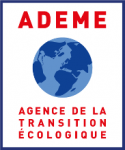 ADEME
ADEME  Nokia Bell Labs France
Nokia Bell Labs France  ASNR - Autorité de sûreté nucléaire et de radioprotection - Siège
ASNR - Autorité de sûreté nucléaire et de radioprotection - Siège  Tecknowmetrix
Tecknowmetrix  MabDesign
MabDesign  CESI
CESI 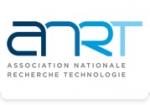 ANRT
ANRT  SUEZ
SUEZ  ONERA - The French Aerospace Lab
ONERA - The French Aerospace Lab  Groupe AFNOR - Association française de normalisation
Groupe AFNOR - Association française de normalisation  Aérocentre, Pôle d'excellence régional
Aérocentre, Pôle d'excellence régional 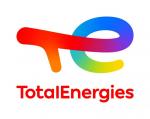 TotalEnergies
TotalEnergies  Laboratoire National de Métrologie et d'Essais - LNE
Laboratoire National de Métrologie et d'Essais - LNE 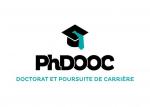 PhDOOC
PhDOOC  Ifremer
Ifremer  Généthon
Généthon  CASDEN
CASDEN  Institut Sup'biotech de Paris
Institut Sup'biotech de Paris

